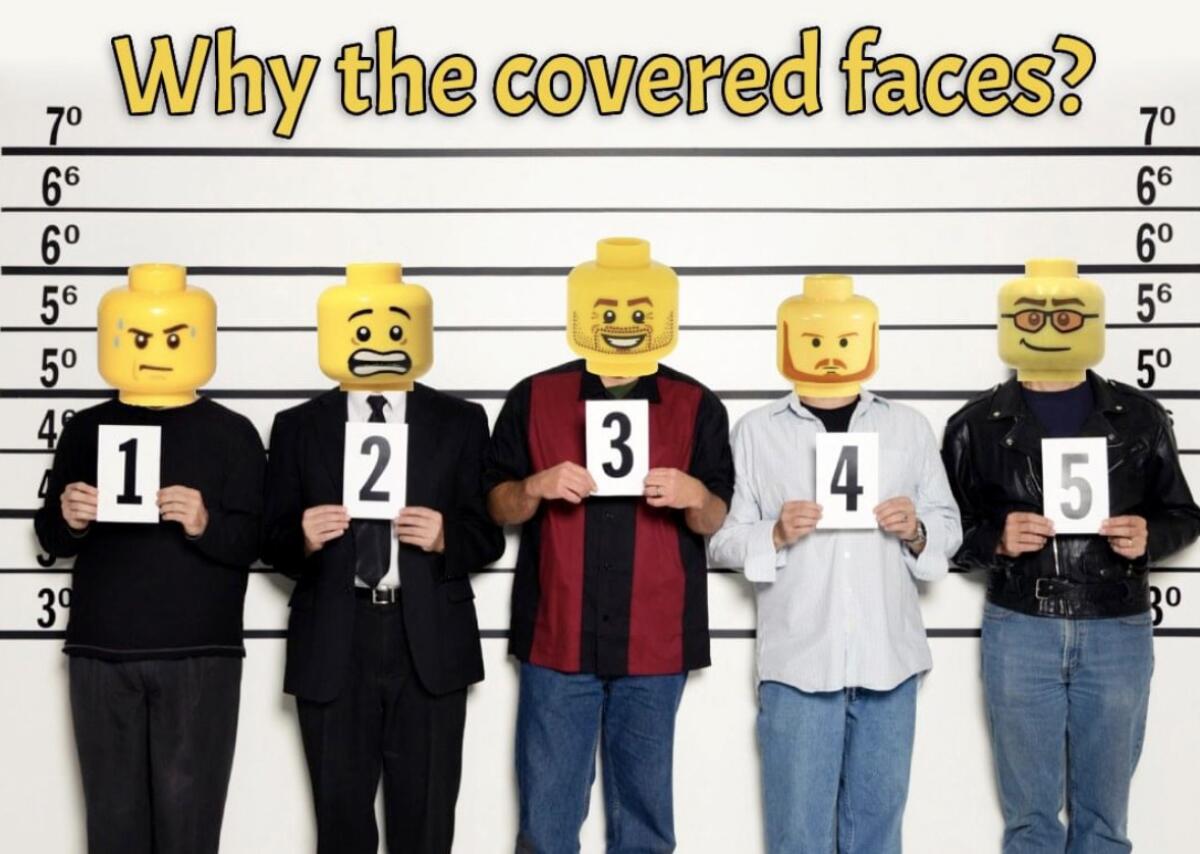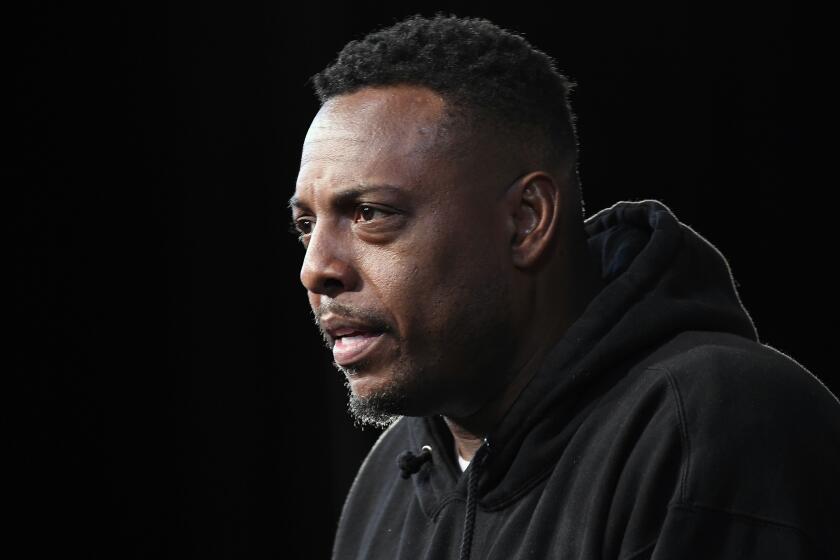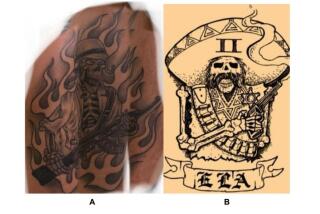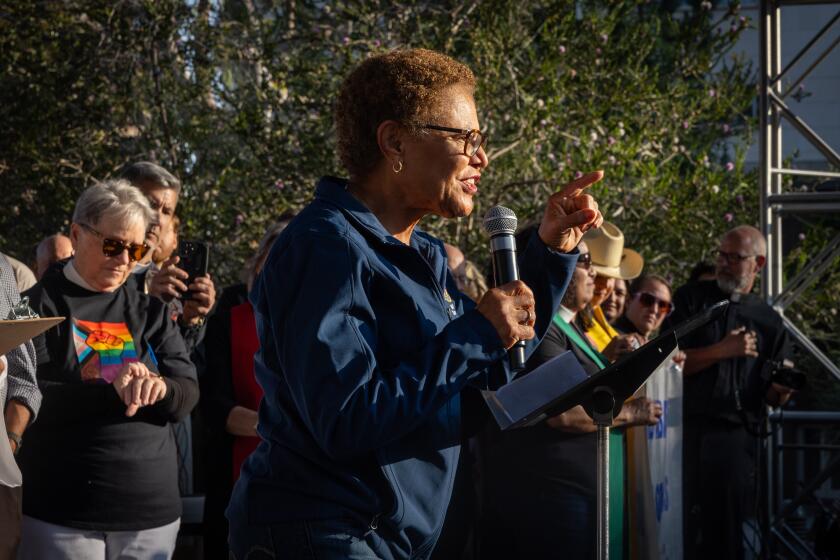Lego heads? California police department posts mug shots but without real faces

- Share via
In the name of criminal justice reform, California lawmakers largely prohibited police departments from posting mug shots of nonviolent suspects or of acquitted defendants on social media accounts, starting this year.
Undeterred, the Murrieta Police Department announced plans this week to continue sharing photos of suspects on its social media accounts — with what appear to be Lego heads substituted for the suspects’ faces.
As an example, the department shared on social media a photo of five suspects in a lineup, with the yellow cylinders obscuring their identities.
“The Murrieta Police Department prides itself in its transparency with the community, but also honors everyone’s rights & protections as afforded by law; even suspects,” according to the post. “In order to share what is happening in Murrieta, we chose to cover the faces of suspects to protect their identity while still aligning with the new law.”
Basketball Hall of Famer Paul Pierce reportedly had more than $100,000 in cash, luxury watches and a safe stolen from his Woodland Hills home.
Murrieta Police Lt. Jeremy Durrant confirmed via email that the post was no joke.
“In the interest of keeping our residents updated on public safety events in our community while, at the same time, respecting the new regulations, we’ve been obscuring the faces of suspects in our social media posts in various ways,” he wrote. “We’ve been doing this for the past couple of years, and it’s nothing new to us.”
The Legislature passed and Gov. Gavin Newsom signed Assembly Bill 1475 in 2021 to prohibit local law enforcement from publishing a mug shot on social media platforms if the individual is accused of a nonviolent crime, unless it would aid in the capture of the suspect; a judge orders the release of the photo; or there is an existing threat to others. Before the prohibition took effect, the state expanded it last year by enacting AB 994, which requires mug shots for a suspect — any suspect — to be removed from social media within 14 days unless special circumstances exist.
At least some criminal-justice experts aren’t amused by Murrieta’s tactic.
Peter Hanink, a professor of sociology and criminology at Cal Poly Pomona, questioned the need to publish a mug shot or a line-up photo of someone who’s been arrested but hasn’t been convicted or even indicted by a grand jury.
He warned that publishing such pictures could damage someone’s reputation.
“Murrieta is saying that they’re publishing the photos out of need for transparency, but if you already have a description of the crime that occurred, what’s the need for a photograph that has no relevant information?” he asked. “The photo obscures the face and then it’s just a body, so what’s the need for the photo?”
To hide the people’s faces in this way, Hanink said, instead of simply blurring out their heads or using black boxes, appears to be a way to dehumanize those who have been arrested.
“The effect is comical, that this is something to mock and take lightly,” he said. “They could’ve easily blurred out the faces and that would’ve achieved the same purpose. To use these other things, these non-human placeholders, it’s part of a long tradition of humiliating and public shaming people who are arrested.”
Hanink cited an example of Joe Arpaio, who served as Maricopa County sheriff in Arizona for 24 years, requiring prisoners in the since-shuttered outdoor “Tent City” jail to wear pink underwear and sleep on pink sheets.
“He changed it to pink because he thought it would emasculate them,” Hanink added.
More to Read
Sign up for Essential California
The most important California stories and recommendations in your inbox every morning.
You may occasionally receive promotional content from the Los Angeles Times.















